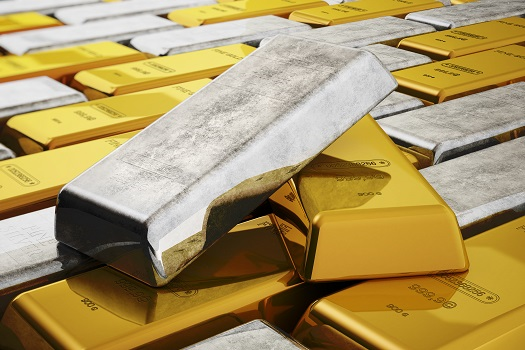Which Metals Are Regarded as Bullion?
In late 2019, the London Bullion Market Association reported gold prices were set to finish the trading year at about $1,478 per ounce, a nice increase in value since January, when it started off around $1,240. These trading values refer to “Good Delivery” gold bars, which weigh 400 troy ounces or 12.4 kilograms, but they’re not the only precious metals that fall into the bullion category.
When it comes to precious metals such as gold and silver, bullion can be an ingot, which is similar to a small bar, or even a special coin minted by a government entity. Bullion is a store of value and can also be used as a trading instrument. If they’re interested in buying gold, platinum, or silver bullion, San Diego precious metals collectors might be interested in the following explanation of what is considered bullion.
The Word “Bullion”
In the 1999 film Three Kings, a group of American soldiers fighting in the Persian Gulf War attempt to get their hands on a treasure of gold bullion bars stolen from Kuwait by the Iraqi regime. One of the soldiers confuses the word “bullion” with the French word bouillon, which we know as cubes that melt in hot water to make broth. While this is a joke in the film, the etymology of “bullion” actually does come from bouillon, which, roughly translated, means “boiling.” Precious metals are melted well past their “boiling point” before they’re formed into bars, coins, or ingots.
Investment-Grade Bullion
The gold bars traded in the London bullion market weigh 12.4 kilograms and are 99.5 percent pure. These Good Delivery bars are usually kept in government vaults as financial reserves. Ingots and bullion coins are about 90 percent pure. Sovereign silver bullion reserves are 99.9 percent pure. Although individual investors rarely hold the type of bullion kept in sovereign vaults, this is the true standard that determines the official market price of precious metals.
Bullion Coins
In the past, some central banks ordered the minting of bullion coins to serve as currency. One example of this is the South African Krugerrand, which is technically still in circulation although it’s mostly utilized for trading. In mid-December 2019, one Krugerrand was worth $1,460 for sellers and $1,506 for buyers. Each of these coins weighs a troy ounce of 22 karat gold. Some bullion coins may be worth more than their metal value because of numismatic interest. For example, a $1 gold coin minted in the 19th century will be highly valued by collectors.
Bullion as an Investment
Holders of bullion coins and ingots have an investment advantage in that they physically hold on to their instruments. Even though you can trust shares of a gold exchange-traded fund listed on Wall Street, there’s nothing like holding actual bullion, particularly older coins that may one day turn into items sought by collectors.
Whether they’re looking for expert advice on precious metals or they want to buy gold, San Diego residents should work with trustworthy precious metal dealers who offer high-quality service and have years of experience. Call on the industry-leading professionals at First National Bullion when you’re ready to invest in precious metals, including gold, silver, platinum, and palladium. Give us a call today at 858-666-6570.
The statements made in this blog are opinions, and past performance is not indicative of future returns. Precious metals, like all investments, carry risk. Precious metals and coins may appreciate, depreciate, or stay the same in cash value depending on a variety of factors. First National Bullion does not guarantee, and its website and employees make no representation, that any metals for sale will appreciate sufficiently to earn the customers a profit. The decision to buy, sell, or borrow precious metals and which precious metals to purchase, borrow, or sell are made at the customer’s sole discretion.


